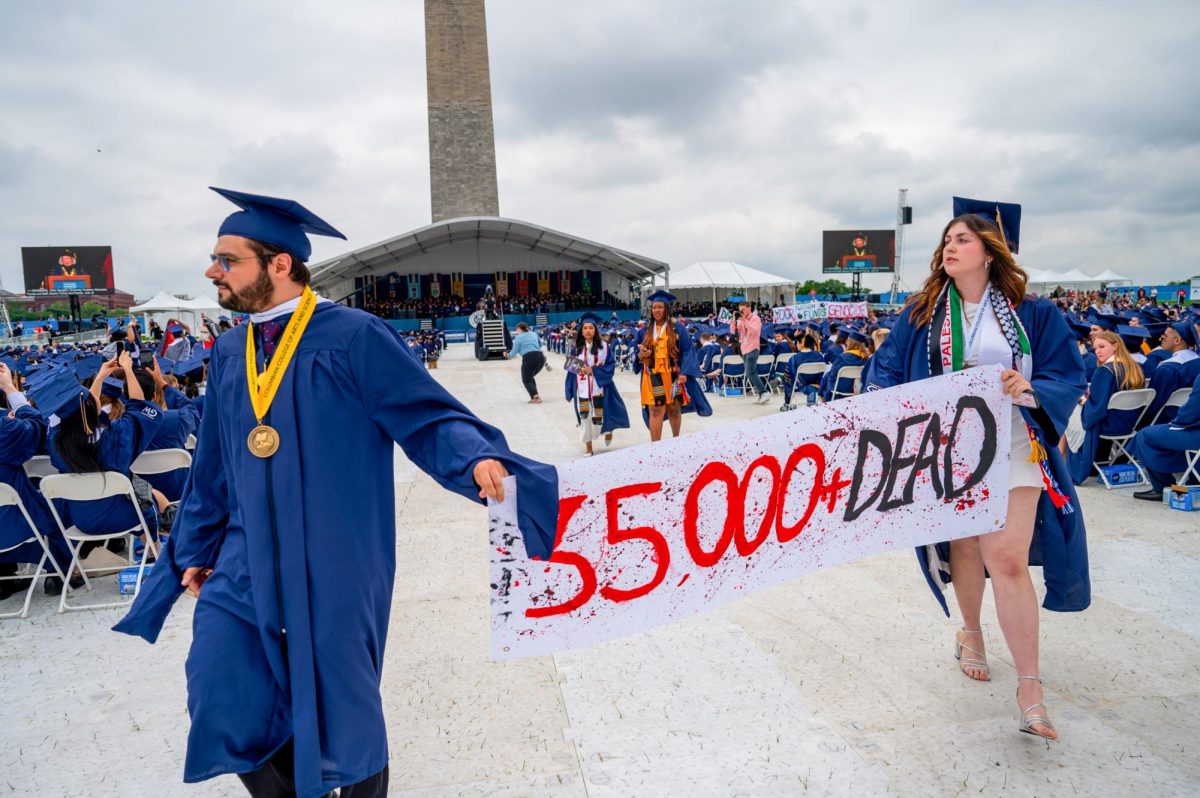This article was written in collaboration with other local newsrooms as part of the D.C. Homeless Crisis Reporting Project. The full project can be found at DCHomelessCrisis.press.
When Ken Martin lost his house in the 1990s, he spent several years moving around before landing on the Foggy Bottom Campus.
Martin spent nights trying to sleep outside of the park next to the GW Hospital but couldn’t get much more than a few hours of rest on the benches. But GW’s campus was where Martin said he formed friendships and found safety until ultimately finding a permanent home again in Adams Morgan, he said.
“GW, well, it may not have provided me necessarily with services that I wanted, it provided me with the services I needed,” he said.
Martin said he began experiencing homeless after he filed for bankruptcy in the late 1990s for the property-management business he opened up with his wife in the 1980s. He said the businesses strained his relationship, and he and his wife separated in the 1990s.
He then moved to Georgia to open a hat shop but moved back to his hometown of D.C. in the early 2000s to spend time with his daughter. He said his daughter lived in Maryland with her mother and was only comfortable communicating with immediate family because interacting with other people was painful.
“My daughter needed her father,” he said. “She didn’t have anybody to talk to. She was in pain, I was not going to be able to stay down there and knowing that she was in pain.”
He said his plans to stay with friends for a few weeks while he looked for a permanent place to stay fell through, so he took to the streets.
Martin said he first sought shelter on the Foggy Bottom Campus because the area is relatively safe and comfortable for people without homes. He spent his days drinking coffee in the Gelman Library Starbucks or using his laptop in the Marvin Center, he said.
“What you have to do is you have to look presentable enough to the public at large so they don’t see you as a threat or as a beggar, but yet look intimidating enough so that street people won’t see us as prey,” he said.
Martin said he formed friendships with the dining hall workers in Marvin, and he would charge his phone while he ate meals. He said the cafeteria workers never suspected that he was experiencing homelessness, and the Starbucks baristas respected people going through and made them feel welcome.
“The shift supervisor and the assistant manager, they were so kind to us,” he said. “We didn’t carry ourselves as homeless people. We came in there, and we made purchases and we would sit and sometimes we might doze off because we’re tired.”
Martin said one of the biggest struggles of experiencing homelessness was not having a permanent place for his belongings. He would sometimes stash blankets and hand warmers in the bushes outside of Starbucks in the mornings, but they would be missing when he came back for them at the end of the day, he said.
District-wide homelessness decreased for the second year in a row in 2018, WAMU reported last May. But homeless advocates said D.C. officials’ methods of counting homelessness misses individuals who don’t stay in homeless shelters or live with friends but don’t have a permanent home, WAMU reported.
Students led an effort in 2017 against Mayor Muriel Bowser’s push to remove homeless encampments on E Street. But Martin said he rarely interacted with students while living on campus and instead formed relationships with several other Foggy Bottom homeless residents, like a mute man named Abraham who communicated using a tablet.
“There weren’t a whole lot of folks that I could say was around were really my friend,” Martin said. “There were a few of them that I was a friend to, but he was my friend. He would go out of his way to try to do stuff for me.”
He said one of the biggest challenges he faced on campus was his “bitter, ugly battles” with a security guard at The Shops at 2000 Penn, who issued him a bar notice while he was sitting on a bench in the mall.
In 2014, Martin suffered two heart attacks within one week and had no home to recover at after receiving heart surgeries at the GW Hospital. He said he was overcome by loneliness because he had no home or family to turn to while he recovered.
“Nothing was the same after that,” he said.
But now, Martin lives in an Adams Morgan apartment he found about two years ago through the District’s housing choice voucher program, which adjusts rent costs so he can pay a third of his income toward rent. Despite the challenges he faced without permanent housing, Martin never felt unsafe or uncomfortable while living on campus, he said.
Martin is now a writer and artist at Street Sense Media and recently opened a hat business.
Lotte Lent, a the assistant director of museum studies, said she met Martin while she was living in Tenleytown a few years ago. Lent said she and her partner frequently ran into him on their way to the Tenleytown Metro stop, where Martin worked selling Street Sense Media newspapers, and they formed a friendship.
“He was very, very interested in being a friend, as opposed to just a vendor or just a business person on the street,” she said.
She said she and her partner liked to go out swing dancing and Martin would ask to take photos of their 1920s-inspired dancing outfits if he saw them on the street.
“He also seemed a little different from some of the other vendors that I have come across,” Lent said. “He was very willing to talk about his own life, and he was interested in other people, and he’d like to have a conversation, whether or not you bought the paper.”
Bardia Saeedi, an artist who worked on interactive art projects for Street Sense Media with Martin, said Martin acted as an activist for D.C.’s homeless community and went out of his way to look out for the other people experiencing homelessness he worked with.
He said that although he worked with Martin on the art projects nearly five years ago, they still regularly stay in touch through email and phone conversations.
“I’ve seen that Ken has been really true to the cause and to his word,” Saeedi said.
Avi Bajpai contributed reporting.





